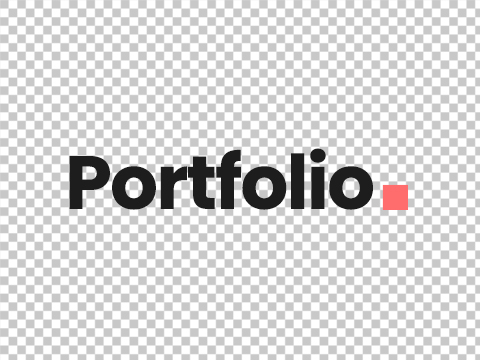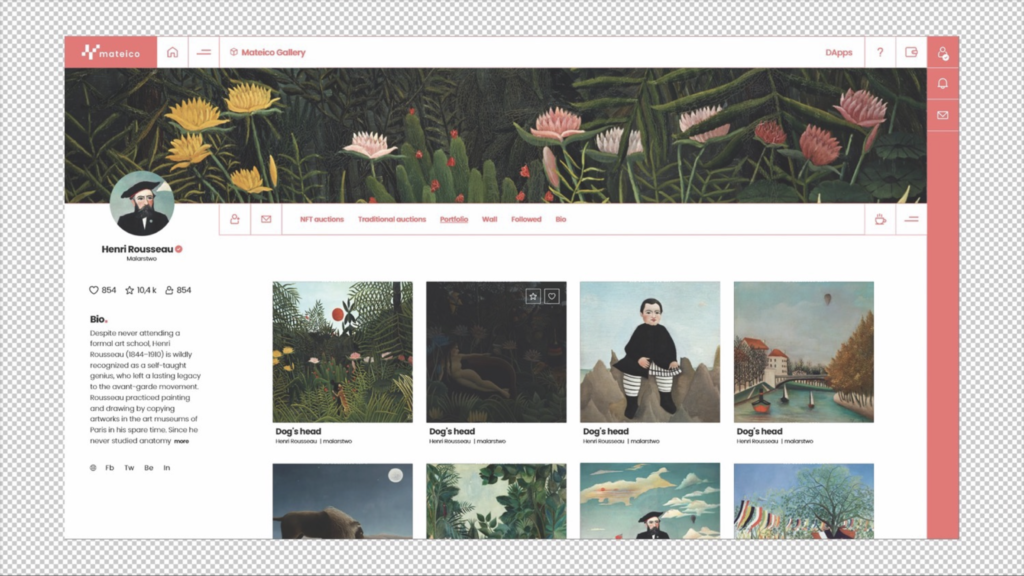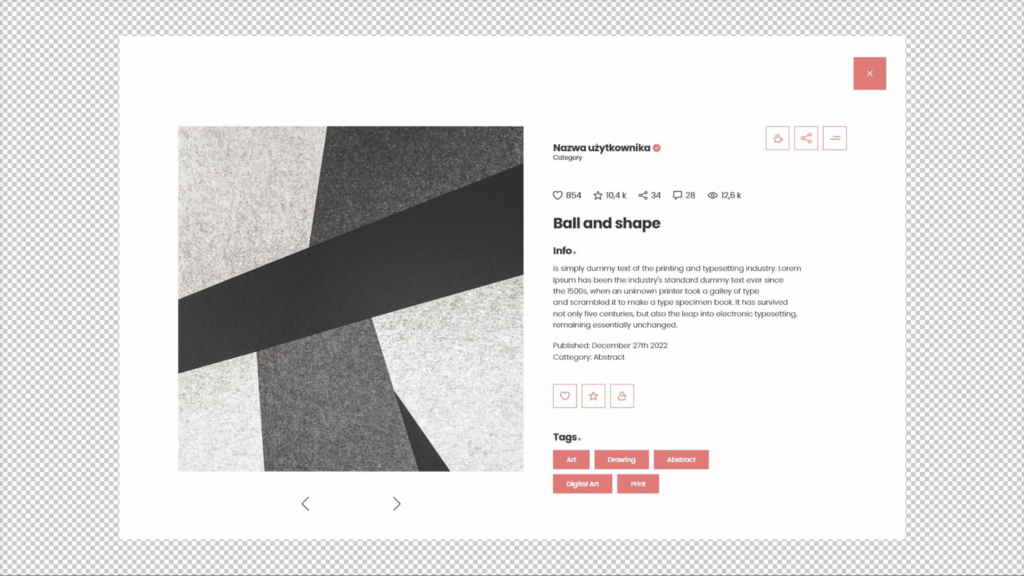
Show your art: Artistic portfolio on the Mateico platform.
A portfolio is a collection of artistic works that serves to showcase an artist’s skills, style, and creativity. It acts as an artistic business card, allowing potential clients, art galleries, artistic agencies, and other audiences to explore our creations and evaluate our abilities. A portfolio is an essential tool for artists looking to build their reputation and find new career opportunities.
In today’s technological advancements and internet-driven world, there are numerous online platforms that facilitate the presentation of portfolios and reaching a broader audience. Examples of such platforms include ArtStation and Behance. These dedicated artist platforms enable easy sharing of artwork, creating professional portfolios, and networking with other artists, clients, and galleries.
In today’s competitive art world, having a solid portfolio is crucial for every artist. Therefore, on the Mateico platform, artists will also have the opportunity to create their portfolios. A portfolio serves as an artist’s calling card and forms the foundation for presenting their work to potential clients, art galleries, artistic agencies, and participants in competitions and exhibitions. Creating and developing a portfolio is a time-consuming and engaging process, but it can be incredibly satisfying and lead to exciting artistic career prospects. In this article, we will discuss the key steps and tips for building a portfolio in the art world.
Artist Profile on Mateico Gallery and M-art.
Discover your artistic potential through the artist profile and portfolio feature on Mateico. As a Mateico platform user, you will have the freedom to switch between two types of accounts: a regular user account and an artist profile. Enjoy the freedom to showcase your artistic genius and captivate a global audience from day one.
With Mateico, you can create a captivating portfolio that showcases your graphic files, animations, and photographs directly on the platform from its launch. Unleash your creativity by organizing your work into individually crafted albums, allowing you to better showcase your talent and unique style.


Portfolio – A few pointers.
I. Setting goals and defining style: The first step in building a portfolio is setting goals and defining the style you want to represent. It is essential to have a clear idea of the type of art you want to create and the story you want to tell through your work. It could be landscape painting, abstract sculpture, comic illustrations, or portrait photography. Defining our goals helps us focus on creating a cohesive portfolio that represents our style and themes.
II. Selecting the best works: Once we have defined our goals and style, it’s time to choose our best works for the portfolio. Carefully review your previous works and select those that best represent your skills, artistic vision, and techniques. You don’t have to showcase all of your work; instead, choose the strongest pieces that align with your goals. Strive for a diverse selection of works that demonstrate your versatility and ability to work in different mediums.
III. Organization and presentation: After selecting the best works, consider the organization and presentation of your portfolio. There are various ways to accomplish this. You can opt for a traditional physical portfolio that includes prints of your work or an electronic portfolio that can be showcased on a website or dedicated platforms for artists. Regardless of the chosen format, ensure a clear and attractive layout of your works. You can divide the portfolio into thematic sections to facilitate navigation for viewers. It’s also essential to include descriptions for each work, such as titles, mediums, sizes, and brief explanations that provide context and meaning.
IV. Skill development: Building a portfolio is not just about presenting past work; it also involves continuous skill development. It’s important to keep improving your artistic abilities and experimenting with new techniques and styles. This can be achieved through continued learning, attending courses, workshops, or utilizing online resources. The more developed your skills, the better your work will be, and the more impressive your portfolio will become.
V. Promotion and gaining experience: Having an outstanding portfolio is only the first step. It’s crucial to promote your work and gain experience in the art industry. You can participate in exhibitions, competitions, and art fairs to establish connections with other artists, clients, and galleries. Consider getting involved in charity events where your work can contribute to noble causes. Building your brand and creating a network of contacts will help you develop your artistic career.
Summary:
Building a portfolio in the art world is crucial for an artist’s success. By setting goals and defining style, selecting the best works, organizing and presenting them effectively, continuously improving skills, promoting your work, and gaining experience, you can create a professional portfolio that represents your creativity and attracts potential clients and audiences. Remember that building a portfolio is an ongoing process—continually develop your skills and create new works to keep your portfolio fresh and intriguing.
